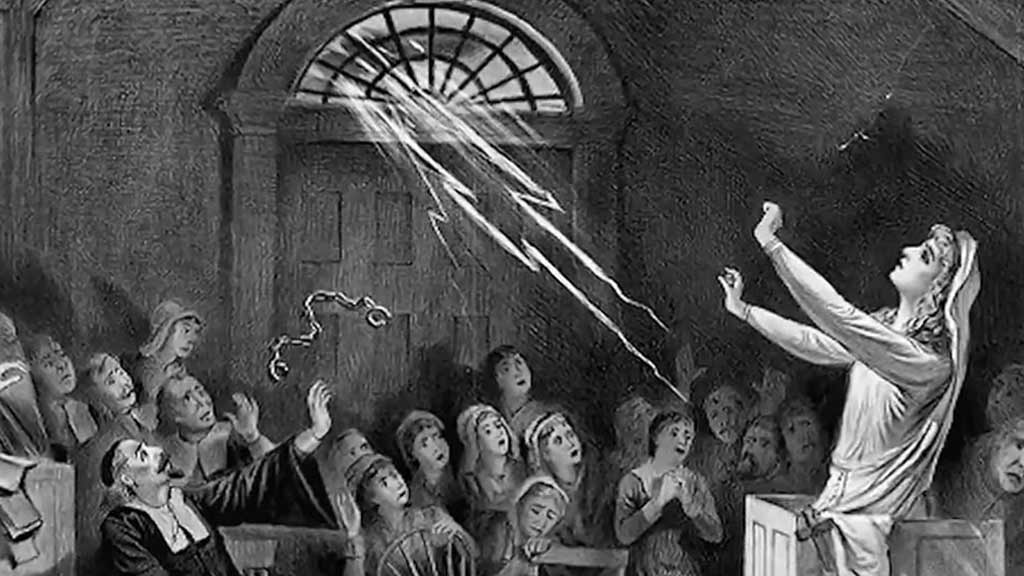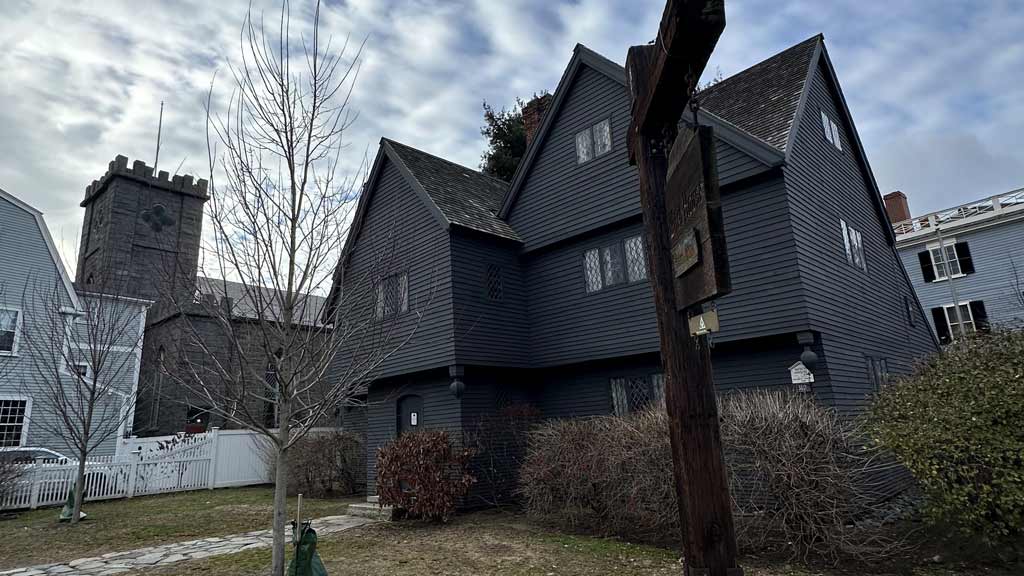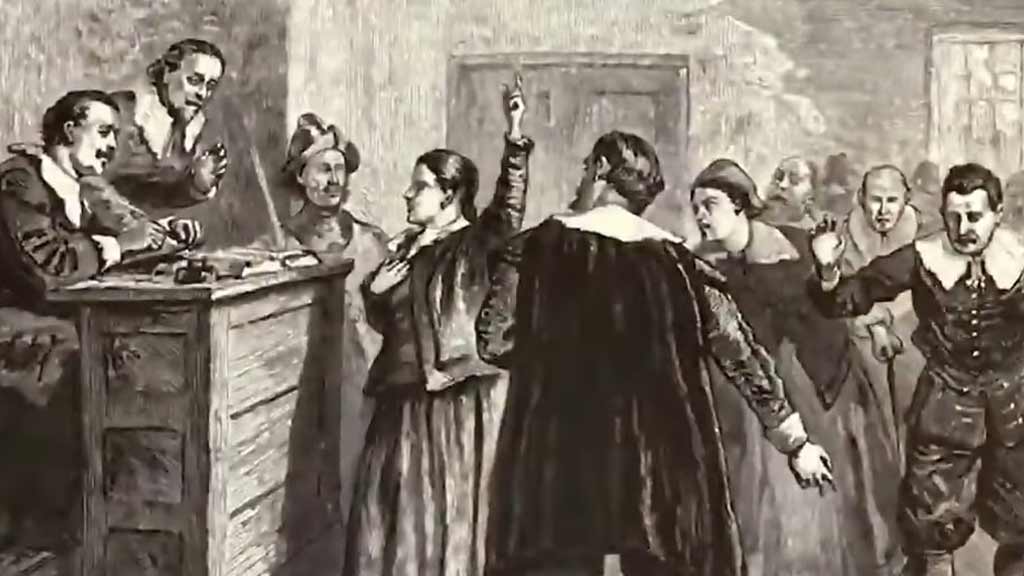Step into the shadows of Salem’s dark past, where tales of murder, betrayal, and the paranormal lurk around every corner.
Salem’s history is not just about witches and witchcraft trials; it’s a tapestry woven with threads of mystery and intrigue. As the sun sets, the city reveals a side shrouded in darkness, waiting to be uncovered.
Explore the eerie streets of Salem on the Dark Stories Tour, where professional storytellers lead you through the city’s chilling past. From haunted hotels to ancient cemeteries, each step unveils a new layer of Salem’s enigmatic history.
Whether you’re a skeptic or a believer, the strange and unusual stories of Salem will captivate you, leaving you questioning what lies beyond the realm of the ordinary.
Book your spot on the Salem Dark Stories Tour and immerse yourself in 90 minutes of murder, nighttime tales, and the macabre.
Discover a side of Salem that goes beyond its witchy reputation, delving into a world where darkness reigns supreme. Are you ready to uncover the secrets of Salem’s shadowy past?
Historical Context of Salem’s Dark History
The phrase “Salem’s dark history” typically refers to the infamous Salem witch trials of 1692, a tragic chapter in American colonial history.
Here’s some historical context:
Origins of the Witchcraft Hysteria

You’re probably aware of the Salem witch trials that took place in the late 17th century, but do you know how it all began? The witchcraft hysteria in Salem originated from a combination of fear, superstition, and societal tensions.
The first accusations of witchcraft were made against three women: Tituba, Sarah Good, and Sarah Osborne. Tituba, an enslaved woman of Indigenous Arawak descent, was the first to be accused, setting off a chain of events that led to the infamous trials.
Influence of Puritan Beliefs
The Puritan beliefs of the Salem community played a significant role in shaping the events that unfolded during the witch trials. Puritans valued strict adherence to religious doctrine and feared any deviations as signs of the devil’s influence.
This rigid religious environment laid the groundwork for the accusations of witchcraft, as any behavior deemed unconventional or contrary to Puritan beliefs was viewed with suspicion.
By understanding the origins of the witchcraft hysteria and the influence of Puritan beliefs, you can gain deeper insight into the dark history of Salem and the factors that contributed to the tragic events that transpired during the trials.
The Salem Witch Trials Explained
Key Events and Timeline

During the Salem Witch Trials in 1692, the community was in turmoil as accusations of witchcraft spread rapidly. It all began with the strange afflictions experienced by young girls in the village, including violent contortions and uncontrollable outbursts of screaming.
The accusations targeted individuals like Tituba, Sarah Good, and Sarah Osborne, and soon escalated, leading to a series of trials that shook the town to its core.
Here is a brief timeline of the key events during the Salem Witch Trials:
- January 1692: The afflictions of young girls, including Elizabeth Parris and Abigail Williams, spark the witchcraft accusations.
- March 1692: The first arrests for witchcraft are made, with Sarah Good, Sarah Osborne, and Tituba being among the initial accused.
- June to September 1692: The Salem witch trials peak, resulting in the hangings of numerous individuals, including women and men accused of witchcraft.
- October 1692: The trials start to lose momentum, with public opinion shifting against the use of spectral evidence, ultimately leading to the decline of the trials.
- Tituba: Tituba, an enslaved woman from the Caribbean, played a significant role in the early accusations of witchcraft. Her supposed involvement in fortune-telling and other practices contributed to the fear and paranoia gripping Salem.
- Sarah Good: Sarah Good, one of the first accused witches, was a destitute woman known for her social isolation and rumored begging. Her vulnerable status in the community made her an easy target for accusations.
- Sarah Osborne: Sarah Osborne, an elderly woman embroiled in land disputes, fell under suspicion due to her contentious relationships with her neighbors. Her reputation and behavior made her a prime target for witchcraft allegations.
Social and Political Impact of the Witch Trials
The Salem witch trials had profound social and political impacts, shaping perceptions of justice, religion, and governance in colonial America.
Here are some key aspects of their impact:
Community and Family Divisions

The Salem Witch Trials deeply divided the community, tearing families apart and creating mistrust among neighbors. Accusations of witchcraft led to suspicion and paranoia, causing rifts that sometimes could not be repaired.
Family members turned against each other, and friendships were shattered as fear consumed the town. The trials exposed the fragility of social bonds and the destructive power of mass hysteria.
Political Instability and Its Effects
The political instability during the Salem Witch Trials had far-reaching consequences. The trials undermined the credibility of the judicial system and eroded trust in authority figures.
The failure of due process and the rush to judgment based on superstition tarnished the reputation of the government.
The lack of checks and balances allowed unchecked power to persecute innocent individuals, highlighting the dangers of unchecked authority in times of crisis.
The aftermath of the trials left a scar on the political landscape, serving as a stark reminder of the importance of upholding justice and preserving civil liberties.
The Restoration of Reputations
The restoration of reputations following the Salem witch trials was a complex and gradual process that unfolded over several decades.
Here are some key factors and efforts involved in this restoration:
Legal Reforms and Compensations
After the dark chapters of the Salem Witch Trials, there were notable legal reforms initiated to rectify the injustices that had marred the town’s history.
These reforms aimed to address the failures of the judicial system that had allowed for the wrongful convictions of innocent individuals based on spectral evidence.
The implementation of these reforms sought to restore the tarnished reputations of those who had suffered unjustly during this harrowing period.
Public Memory and Heritage Sites
The legacy of the Salem Witch Trials is preserved through various public memory initiatives and heritage sites that serve as reminders of the town’s turbulent past.
Visitors can explore locations such as Proctor’s Ledge, where many victims were hanged, immersing themselves in the somber history of the trials.
Additionally, the infamous Salem jail, with its grim conditions and harsh treatment of the accused, stands as a testament to the horrors faced by those ensnared in the witch hysteria.
These heritage sites play a crucial role in commemorating the victims and ensuring that the lessons of Salem’s dark history are not forgotten.
Frequently Asked Questions
What is the focus of the Dark Stories Tour in Salem?
The Dark Stories Tour in Salem unveils hidden secrets beyond the infamous witchcraft trials, offering insights into Salem’s enigmatic history through guided exploration.
Who were the key figures during the Salem Witch Trials?
Key figures during the Salem Witch Trials included Tituba, Sarah Good, and Sarah Osborne, whose involvement in the trials played significant roles in the unfolding events of that time.
What impact did the Salem Witch Trials have on the community?
The Witch Trials caused deep community divisions, tearing families apart and breeding mistrust among neighbors, shedding light on the perilous consequences of mass hysteria and the importance of justice and civil liberties.
How have legal reforms addressed the injustices of the trials?
Legal reforms aimed to rectify the wrongs of the judicial system that led to wrongful convictions based on spectral evidence, working to restore the reputations of those unjustly accused during the trials.
How is the legacy of the Salem Witch Trials preserved today?
The legacy of the Salem Witch Trials endures through public memory initiatives and heritage sites like Proctor’s Ledge and the Salem jail, serving as reminders of the town’s tumultuous past and honoring the victims while imparting lessons from history.
Conclusion
You’ve now delved deep into Salem’s dark history, unearthing the hidden secrets that lie beyond the infamous witchcraft trials.
From the origins of the witch hysteria to the social and political impacts of the trials, you’ve witnessed the unraveling of a community torn apart by fear and suspicion.
The legacy of the Salem Witch Trials lives on through legal reforms and public memory initiatives, ensuring that the lessons learned from this tumultuous period are not lost to history.
As you reflect on the fragility of justice and the consequences of unchecked power, remember the importance of upholding civil liberties and preserving the truth, even in the face of mass hysteria.
Salem’s dark history serves as a stark reminder of the dangers of intolerance and the enduring need for justice and remembrance.
Jaclyn Lowe